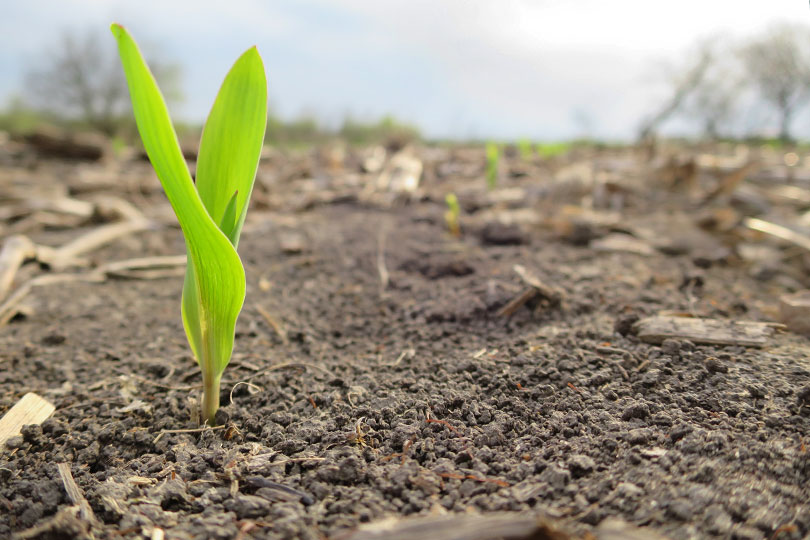By Jessica Domel
Multimedia Reporter
The much-anticipated prospective plantings report was released by the U.S. Department of Agriculture (USDA) this week, reflecting mostly positive attitudes when the survey was taken in late February and early March.
Corn
USDA’s National Agricultural Statistics Service (NASS) forecasts U.S. farmers will plant 97 million acres of corn this year, up 7 percent from 2019. It’s about three million acres higher than analysts’ expectations.
Texas farmers are projected to plant 2.7 million acres, an increase of 8 percent.
The forecast planting acreage may not be realized as some things have changed since the NASS producer survey was taken.
“Corn prices have fallen with the impact of COVID-19 on expected commodity demand,” USDA Chief Economist Rob Johansson said in an interview with USDA Radio. “At the same time, we know that wheat prices have risen, so it wouldn’t be unsurprising to see producers reflecting those kinds of economic influences when they decide what they actually do plant.”
Weakened ethanol demand may also impact the number of acres planted to corn.
“Just in general, gasoline demand is going to be down in 2020,” Johansson said. “There will be less interstate commerce but also much less travel by Americans this year. That will diminish their demand for motor fuels, and so with gasoline demand, so does ethanol demand decline.”
About 40 percent of the U.S. corn crop is typically used in ethanol production, per USDA.
Cotton
Nationally, farmers are expected to plant 1 percent less cotton at 13.7 million acres.
“That’s at the high end of the trade expectations,” Johansson said. “The trade expectations being surveyed more recently, last week, which would have built in some notion of more of the economic impacts of the coronavirus than producers were able to reflect in their responses to the survey.”
The National Cotton Council’s planting intentions survey, which was released in early February, indicates cotton farmers plan to plant 12.8 million acres of upland cotton, down 5.5 percent, and 224,000 acres of extra-long staple (ELS) cotton in 2020.
“With average abandonment and yields, production is estimated to be 19.8 million bales with 19.1 million upland bales and 675,000 ELS bales,” Dr. Jody Campiche, vice president of Economics and Policy Analysis for the Council, said at the time. “The cotton to corn and cotton to soybean are lower than in 2019 due to lower cotton prices and higher corn and soybean prices. A price ratio decline generally indicates a decline in cotton acreage.”
According to USDA, Texas farmers are forecast to plant 7.3 million acres of upland cotton this year. That’s up 4 percent over 2019.
Pima cotton plantings are forecast 8 percent higher at 13,000 acres.
Grain sorghum
NASS forecasts more than 83 million acres of grain sorghum will be planted in the U.S. this year. That’s 11 percent higher than last year.
“While we are pleased to see a projected year-over-year increase in acres, a lot has changed in our world since the surveys used to help formulate this report were taken in February, and we feel there is greater opportunity for increased sorghum acres in the United States for the 2020-2021 marketing year,” Tim Lust, National Sorghum Producers CEO, said.
Lust said when the analysis was conducted, sorghum prices did not reflect basis appreciation from export sales that occurred since that time.
“Significant purchase activity by China, approaching 1 million metric tons over the course of the last seven weeks, has driven basis improvements, and these purchases account for roughly 10 percent of the sorghum produced last year,” Lust said.
Sorghum for export traded at near-parity to corn during the entire month of February when some of the NASS surveys were conducted.
“Today, sorghum for export commands a 13 percent premium,” Lust said. “These gains have been seen at interior country elevators, as well, with new crop basis gains of $0.20-$0.40 in the past two weeks. These sales and basis improvements are encouraging, and, if this pace continues, will lead to potential for significant farm profitability gains.”
Texas farmers are expected to plant 1.8 million acres of grain sorghum.
That’s 16 percent higher than 2019.
Soybeans
Nationally, soybean acreage is forecast up 10 percent to 83.5 million acres in 2020. If realized, it will be the third highest planted acreage on record.
Texas farmers indicated they intend to plant 115,000 acres of soybeans this year. That’s up 44 percent from 2019, but still remains the 175,000 acres planted in 2018.
Wheat
All wheat planted in the U.S. is forecast at 44.7 million acres, down 1 percent from last year.
According to USDA, that’s the lowest all-wheat planted area since records began in 1919.
More than 30 million acres of winter wheat were planned in the U.S. this year. That’s down slightly from last year and is the second lowest planted acreage on record.
Other spring wheat is forecast at 12.6 million acres, down 1 percent from 2019.
Durum wheat is expected on 1.29 million acres. That’s four percent lower than last year.
In Texas, winter wheat was planted on 4.8 million acres, up 7 percent from 2019.
Peanuts
U.S. farmers are expected to plant 1.5 million acres of peanuts this year, up 8 percent from last year.
Texas farmers tell USDA they expected to commit 3 percent more acreage to peanuts this year at 170,000 acres.
Rice
Rice production is forecast up 12 percent this year, according to the USDA survey.
The forecast is for 2.84 million acres nationally.
Rice has been planted on 172,000 acres in Texas, up 10 percent from last year.
The state and national Prospective Plantings report from NASS is available here.

